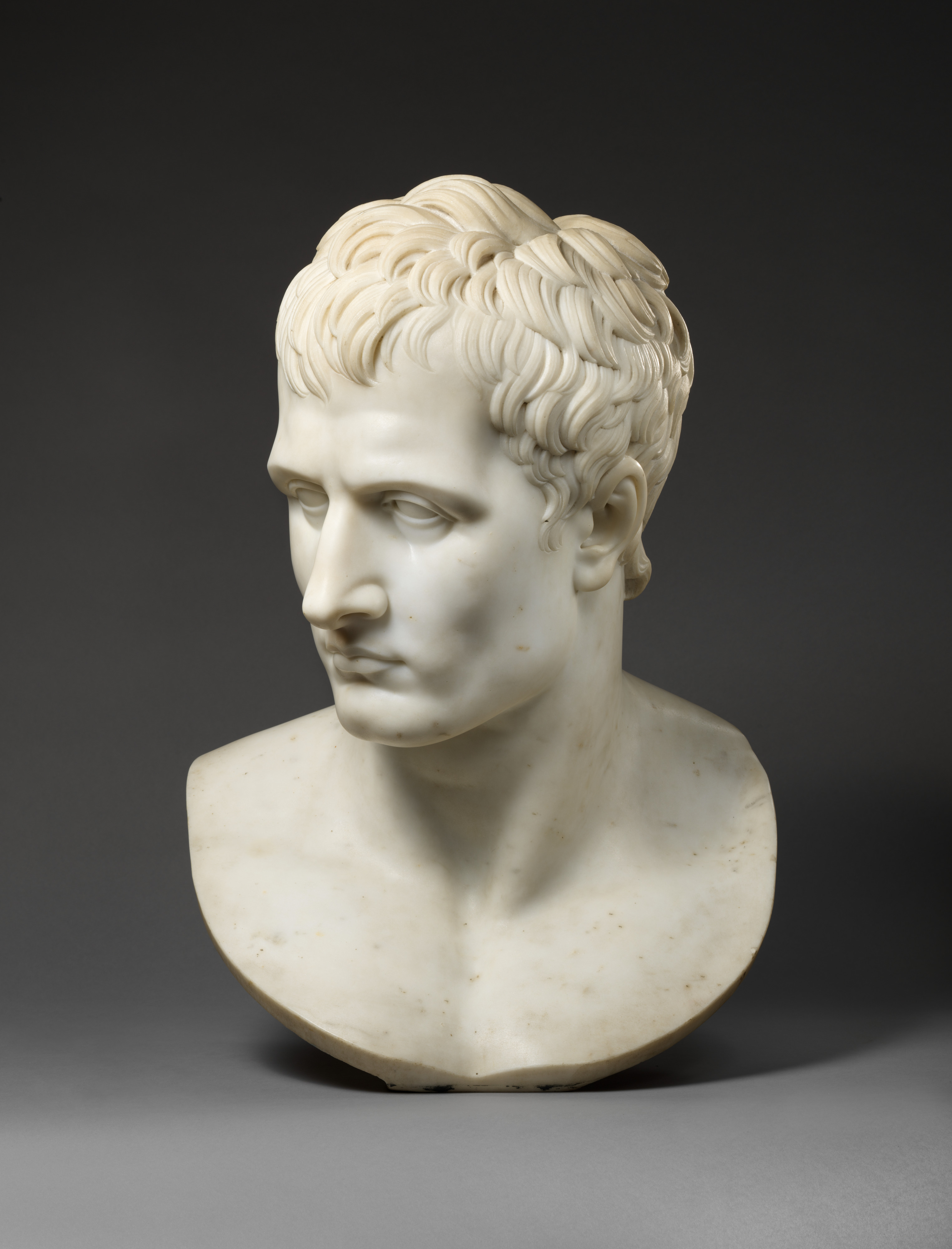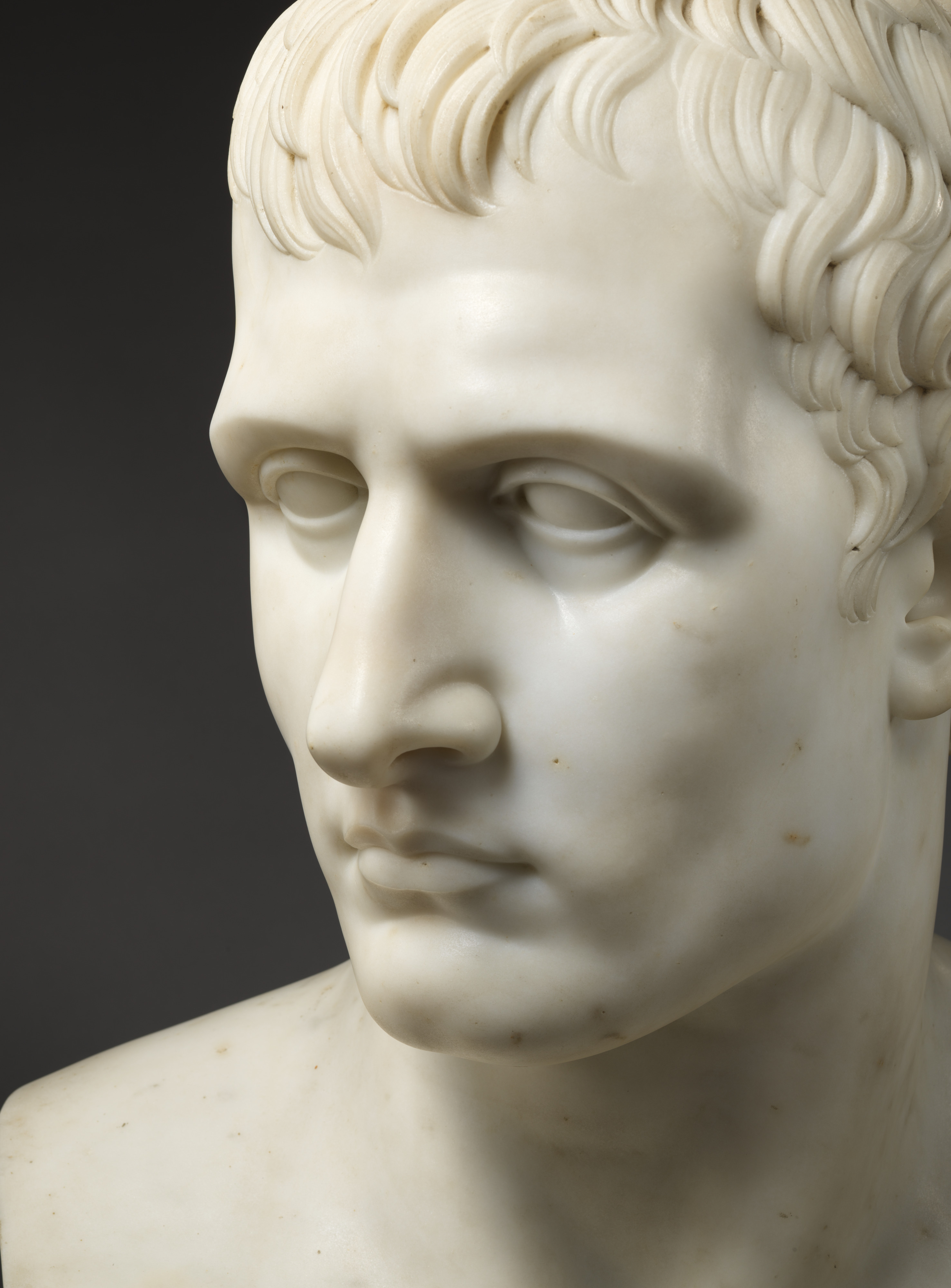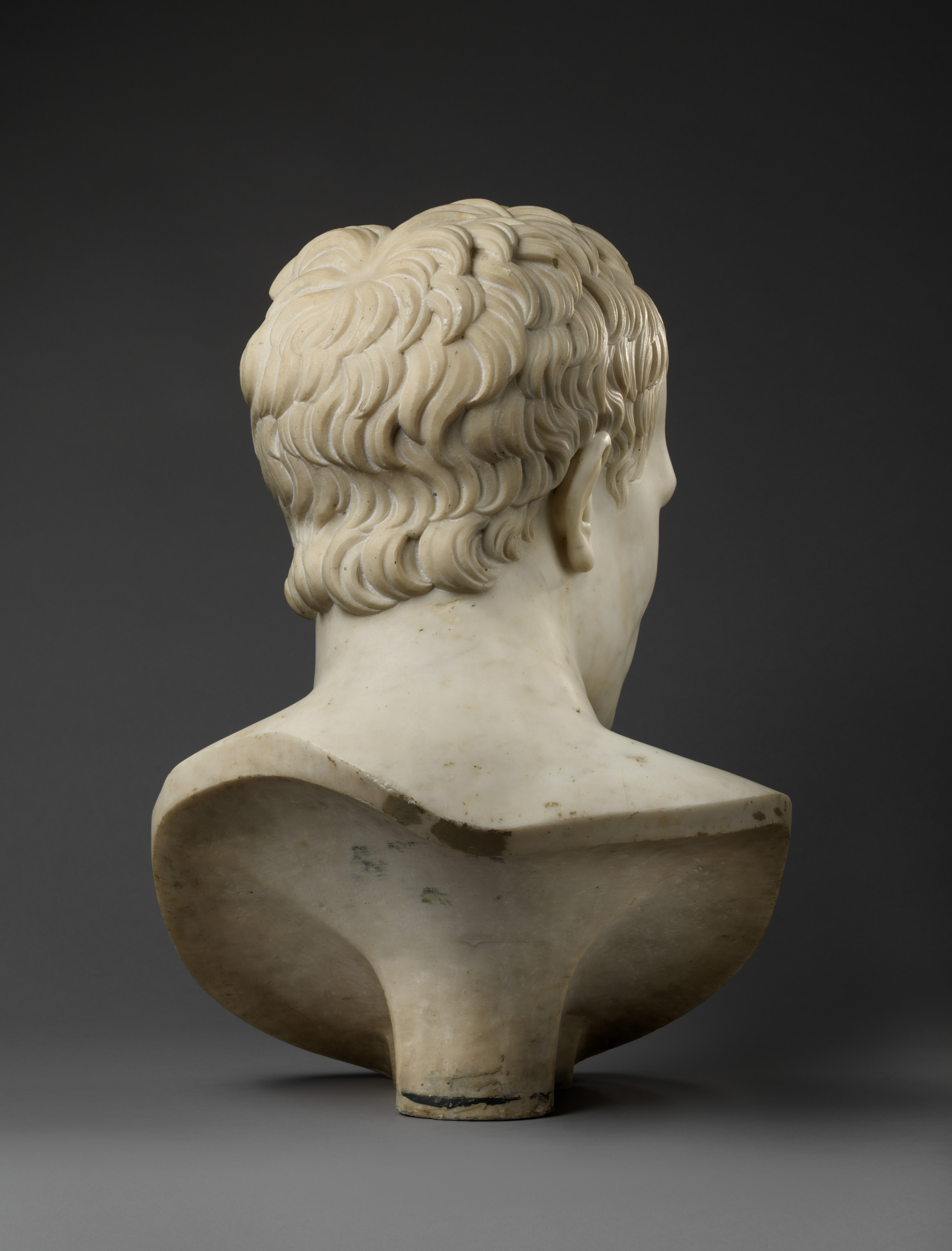Bust of Napoleon
After a model by Antonio Canova Italian
Not on view
Antonio Canova, the most celebrated Neoclassical artist in Europe, derived the Bust of Napoleon from his full-length colossal marble statue of Napoleon as Mars Pacificus (1803–1806; London, Apsley House). The bust’s scale, composition, and truncationare owed to its origins as a full-length figure. Napoleon famously rejected Canova’s monumental portrayal of him as Mars because of the statue’s nudity. The bust Canova derived from it conversely became one of the emperor’s important official images. Numerous colossal and life-sized examples of the Bust of Napoleon were disseminated throughout Europe. It was the sole model by Canova to have been reproduced in marble outside of his Roman workshop during the sculptor’s lifetime.
The Colossal Bust of Napoleon captures the monumental ambition and all’antica majesty of Napoleon’s imperial portraits. Yet it is almost certainly not by Canova’s hand, and it might not have been carved under his supervision. Although Canova’s Roman studio produced marble versions of the colossal bust and sold plaster models of it, this supply apparently did not fill the expanding empire’s demands. In 1805 Napoleon’s sister, Elisa Bonaparte Baciocchi, Duchess of Lucca, established an Académie des Beaux-Arts and a business at the quarries at Carrara that focused on the reproduction of imperial marble portraits from models by sculptors that included Lorenzo Bartolini, Antoine Denis Chaudet, and Baron François Bosio. The Carrara workshop’s state-sanctioned use of Canova’s plaster models to carve marble replicas presumably was tolerated by the master. Between 1808 and 1814 forty-two Carrara workshop marbles of Canova’s Bust of Napoleon in colossal and life-sized scale were received for sale in Paris, and the Museum's example may have been one of them.
[Denise Allen, 2015]
Due to rights restrictions, this image cannot be enlarged, viewed at full screen, or downloaded.
This artwork is meant to be viewed from right to left. Scroll left to view more.





